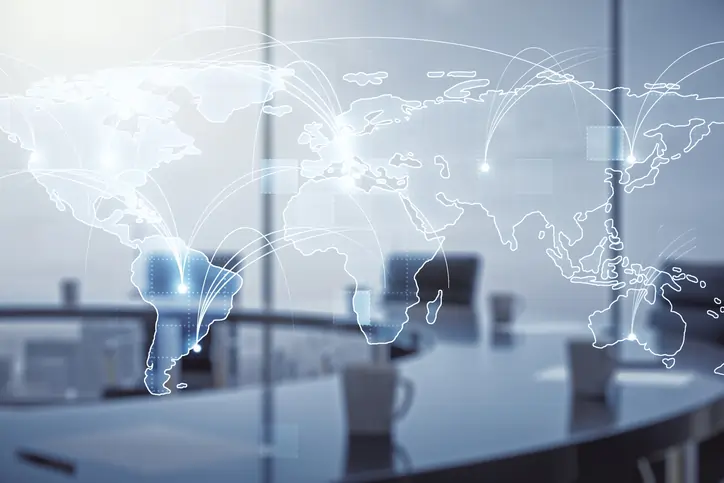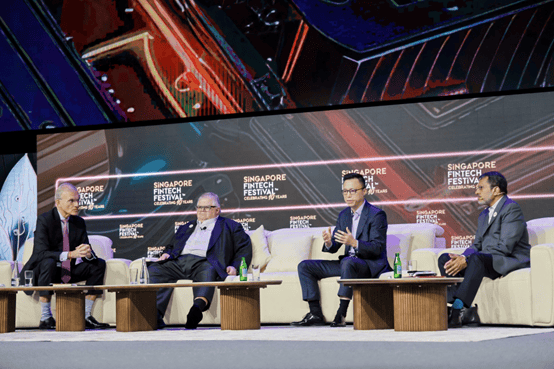
Getting to know Raphael Braes, Chief Product & Technology Officer, Tradeshift

We reported on Raphael Braes’ return to Tradeshift as Chief Product & Technology Officer. We caught up with Raphy to learn more about Tradeshift, its ambitions, and his vision for harnessing emerging technologies to transform global trade.
-Raphy, for those unfamiliar with Tradeshift, tell us a bit about the company and its mission.
To understand Tradeshift’s mission, it’s first worth providing some context. Right now, over 85% of global B2B trade is not digital, and by that, I mean it relies on large amounts of paper and manual processes to keep goods flowing through supply chains.
These paper-based processes are a legacy of the pre-digital world, and it’s astonishing they have survived into the third decade of the 21st century. Tradeshift is focused on addressing the inefficiencies and vulnerabilities that exist across global supply chains as a result of this failure to digitize.
Our mission is to change not just the way B2B enterprises transact with each other, but to completely reimagine global trade. That starts by digitising and automating all the complex, time-consuming and paper-based processes involved in everyday trading transactions such as ordering, invoicing and payments, and unifying all of these interactions on a single platform.
By embedding automation and AI directly into the transaction process, we can eliminate huge swathes of manual work by increasing straight-through processing. Tradeshift customers have already seen AI reduce manual interventions by as much as 99.5%, delivering huge efficiencies and cost savings.
But improving processes is just the start. Because once you get people transacting and networking on a digital platform for all their purchasing, invoicing, and payments, incredible things start to happen.
-So you’re about more than ‘doing away with paper’?
Absolutely – when businesses can connect, collaborate, and transact digitally, it opens up a whole world of opportunity, enabling businesses to start doing things that have never before been considered possible.
Today, we have over a million businesses active on the Tradeshift platform, all connected on a single, digital network. The network provides the catalyst for us to bring a huge array of additional value-adding services to every business that joins Tradeshift.
We work with a number of different partners to build and innovate on our platform. Last summer we announced our intention to form a Joint Venture with HSBC focused on the development of embedded finance solutions and financial services apps that will democratise access to working capital for businesses who would otherwise be left in the cold.
The activity we see on the Tradeshift platform provides us with genuinely unique insight into the pressures businesses face and how best to overcome them. These businesses and their relationships also represent the building blocks for a community of trusted traders. Our marketplace offering connects large organisations to pre-vetted suppliers in a curated purchasing environment that provides convenience, control and competitive pricing.
-“Transforming global trade” is quite a bold claim…
If anything, I’ve understated the significance of what Tradeshift is doing. We’re not just applying technology to make incremental changes – we’re aiming at nothing short of structural, systemic changes to how the global economy functions.
Tradeshift is a business that has virtually limitless potential, not just in terms of revenue, but also in terms of impact on society. The connectivity and tools we deliver through our platform go way beyond turning paper into bits and bytes, important as that is. It’s an opportunity to create a level playing field of access to global markets that will benefit businesses in every corner of the world.
-What are the challenges and opportunities B2B businesses face in reimagining their supply chains?
In my experience, one of the biggest obstacles is in mentality. Businesses need to look at these issues holistically, and understand the impact of digital not just on their processes but the entire business and its go-to-market strategy.
There are any number of technology vendors out there today focused on optimising individual aspects of B2B trade, but piecemeal solutions won’t solve major, structural problems in the supply chain. We’ve got to look at the bigger picture, which is to reinvent the ways businesses build, manage and above all learn from their global trading networks.
Once you have that shift in mindset, the benefits of digitalising transactions and processes, and of building digital networks become obvious. The old paradigm of one-to-one relationships is being replaced by one-to-many and, through B2B marketplaces, many-to-many – all founded on the bedrock of digital technology.
Once we get businesses connecting, trading and transacting on the same platform, we open up transformative opportunities across any number of fields: from unlocking trillions of dollars in supply chain finance, to providing participants with business-critical insight into the financial or operational health of their supply chains.
Having shareable, real-time data will bring new opportunities for buyer-supplier collaboration – for example, by improving business processes and supply chains, or through the introduction of new financial tools. Moreover, by breaking down siloes it will help businesses understand themselves better, improving communication and insight between departments.
I hope I’ve given a good impression of what a genuinely exciting time this is, and why I leapt at the chance to rejoin Tradeshift. I firmly believe that what we are doing at Tradeshift will not just benefit business, but the whole world. I feel incredibly lucky to be able to play a part in shaping that future.


